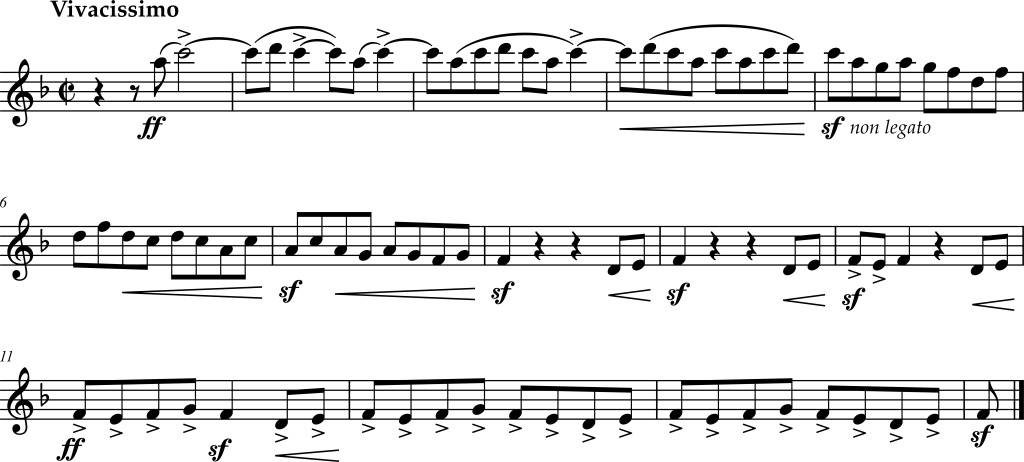The Half-Note Beat
The time signatures we have encountered so far assign the quarter or dotted-quarter note as the beat value. While these time signatures are ubiquitous in many notated genres of music, assigning longer note values to the beat is not uncommon. In this chapter, we explore two of the most typical half-note-beat time signatures: 2/2, known as “cut time” or alla breve, and 3/2.
The difficulty with half-note-beat time signatures is primarily visual, since we must recognize the half note as the beat—not two beats—the quarter note as the beat division, the eighth note as the subdivision, and so on. It can be helpful to imagine (or even re-notate) what the passage would look like with the quarter note assigned to the beat.
Two versions of the same passage are shown in Exercise 3A–1. The upper two staves show two half-note beats per measure, while the lower two staves show two quarter-note beats per measure. The notation has changed, but the rhythm and meter remain unchanged: both versions are in simple duple meter and sound exactly the same when performed. Try both versions before moving on to the other exercises in this chapter.
Exercise 3A–1: Two Ways of Notating the Same Passage, Charles Ignatius Sancho, 24 Country Dances, Number 15
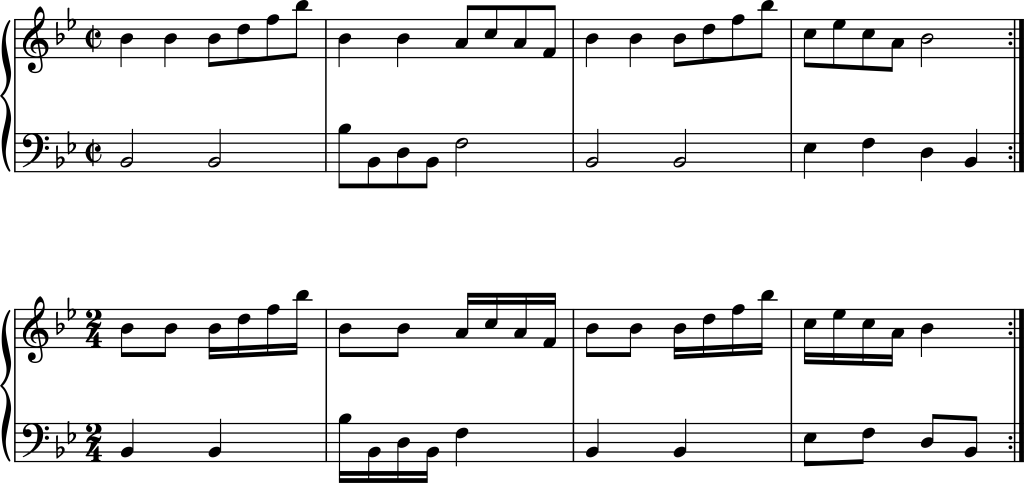
Exercise 3A-2: Charles Ignatius Sancho, 24 Country Dances, Number 15
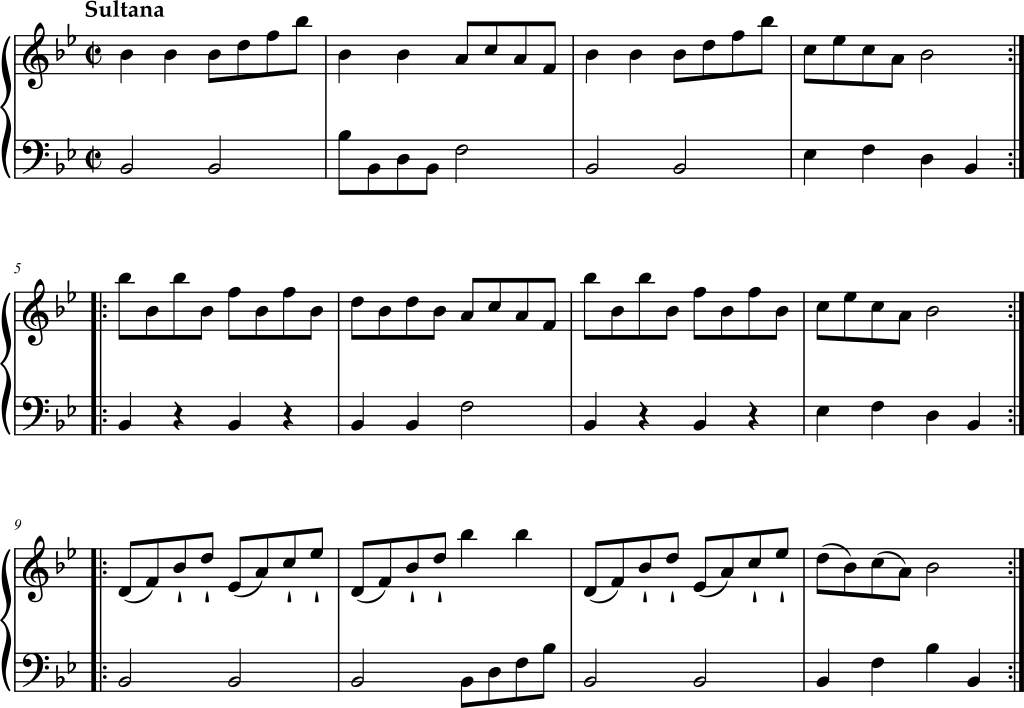
Exercise 3A-3: Johannes Brahms, 14 German Folk Songs, Number 8, “In stiller Nacht”
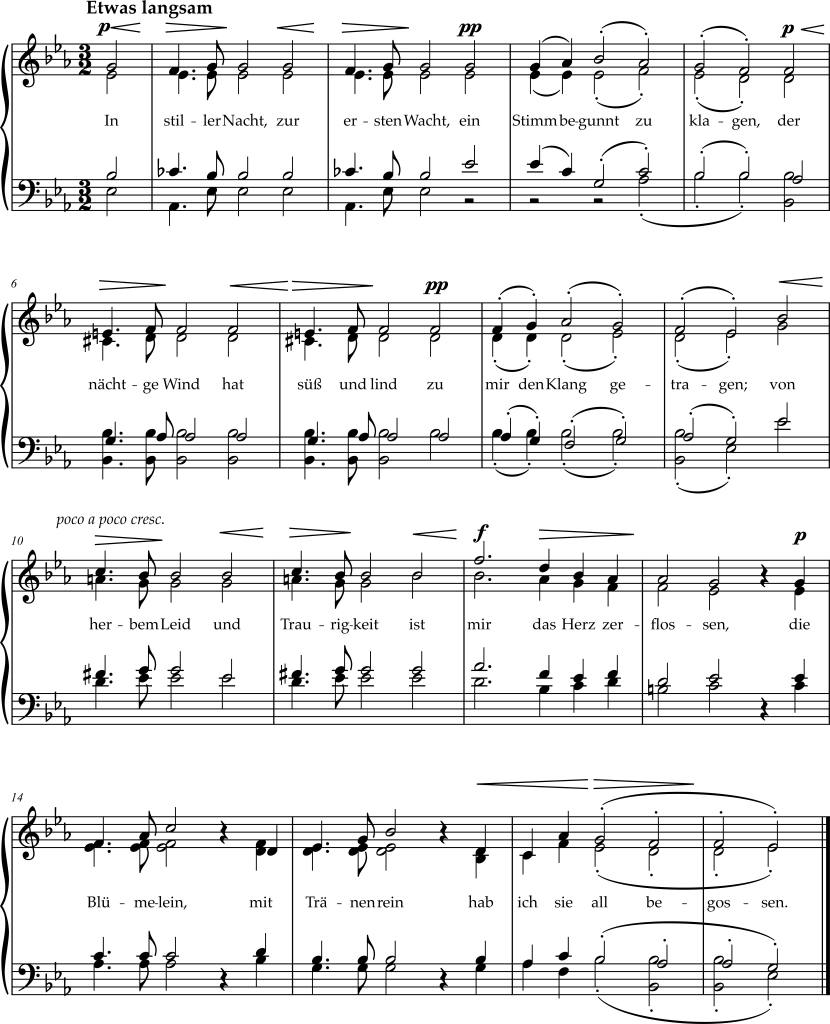
Exercise 3A–4: Camille Saint-Saëns, Clarinet Sonata, Movement 2
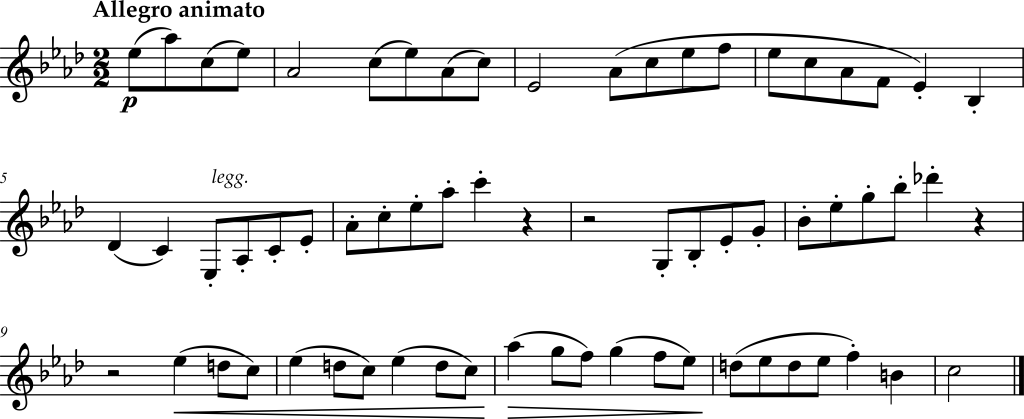
Exercise 3A–5: Lili Boulanger, Reflets
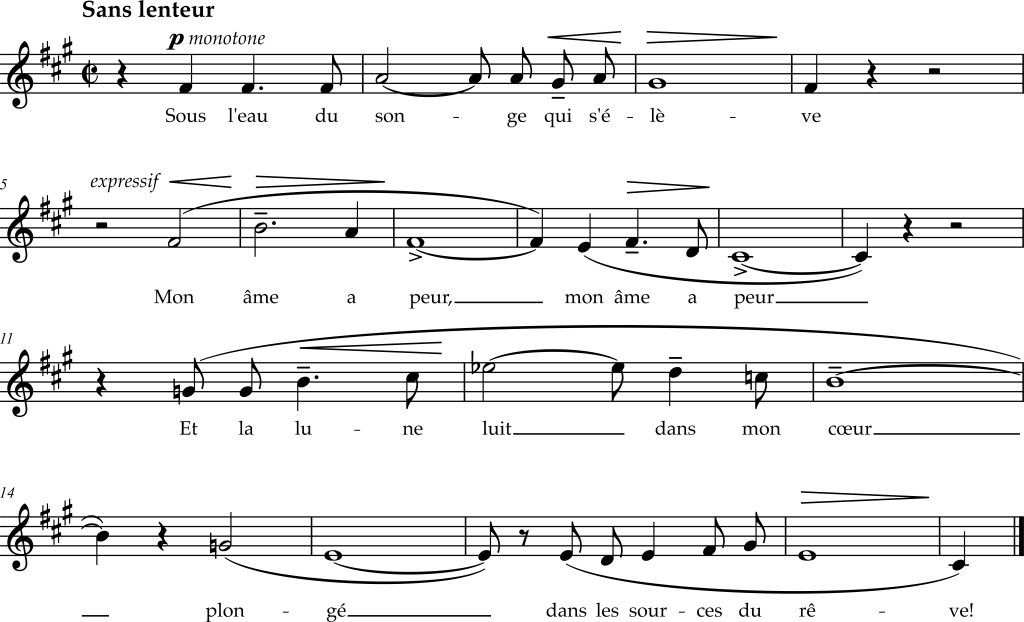
Exercise 3A–6: Johann Ernst Galliard, 6 Bassoon Sonatas, Number 1, Movement 4, English Hornpipe
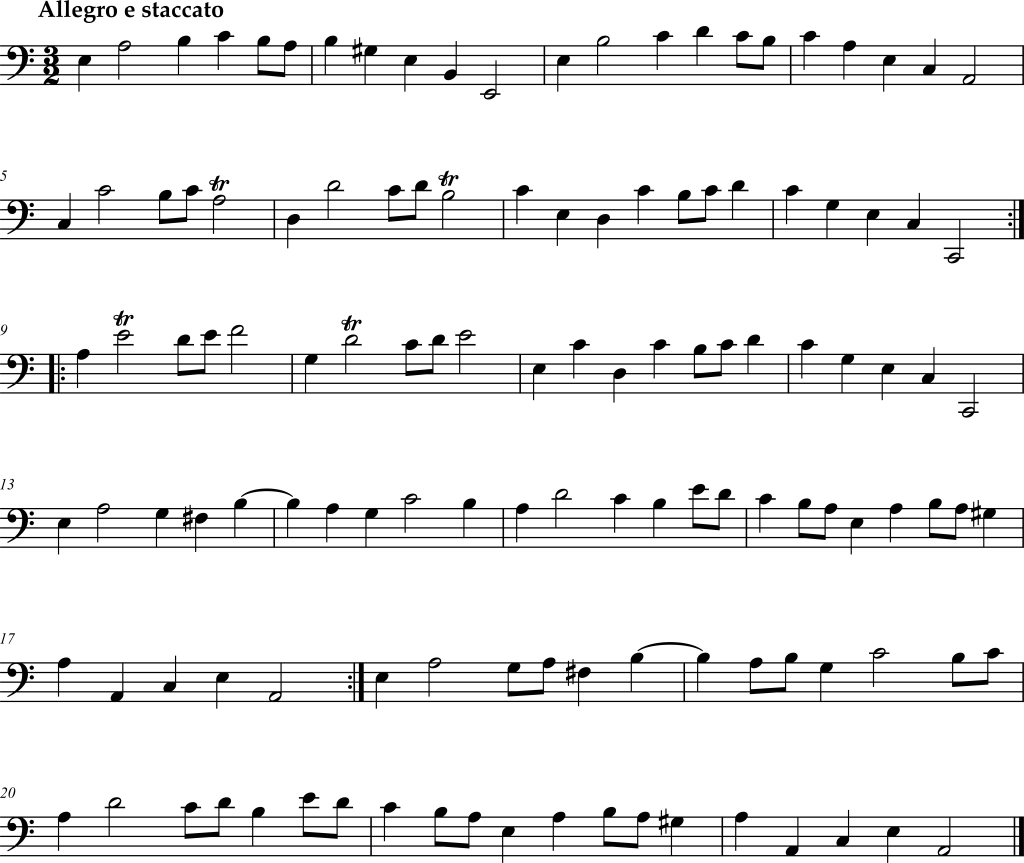
Exercise 3A–7: Henry Purcell, “When I am laid in earth” (Dido’s Lament) from Dido and Aeneas
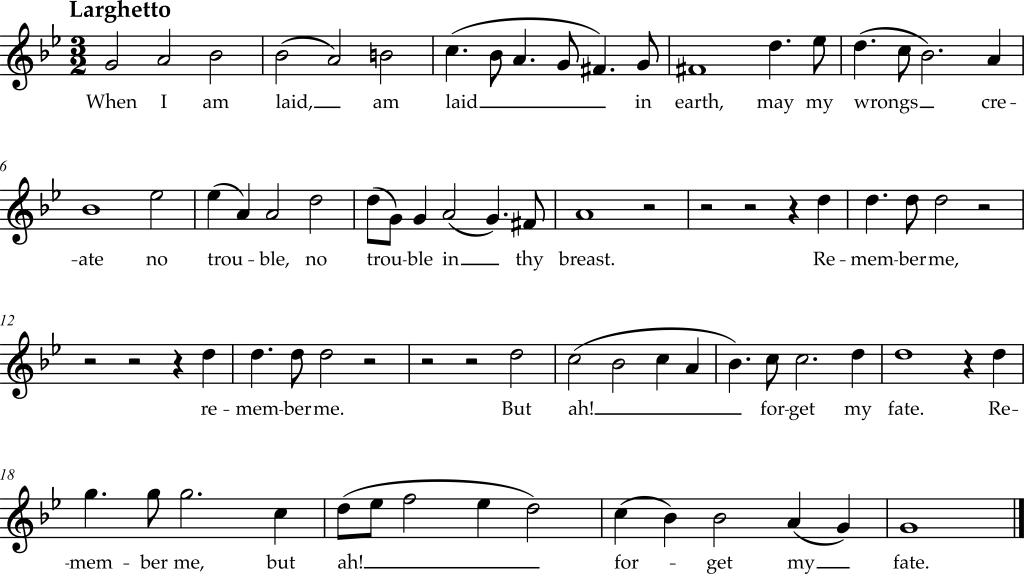
Exercise 3A–8: Gustav Mahler, Symphony Number 4, Movement 3

Exercise 3A–9: Lili Boulanger, Vieille prière bouddhique
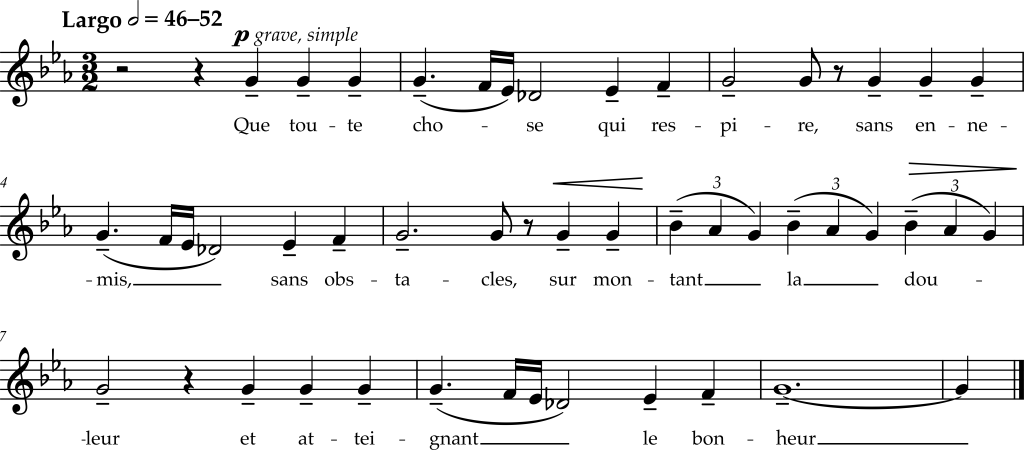
Exercise 3A–10: Louise Farrenc, Violin Sonata Number 1, Movement 3
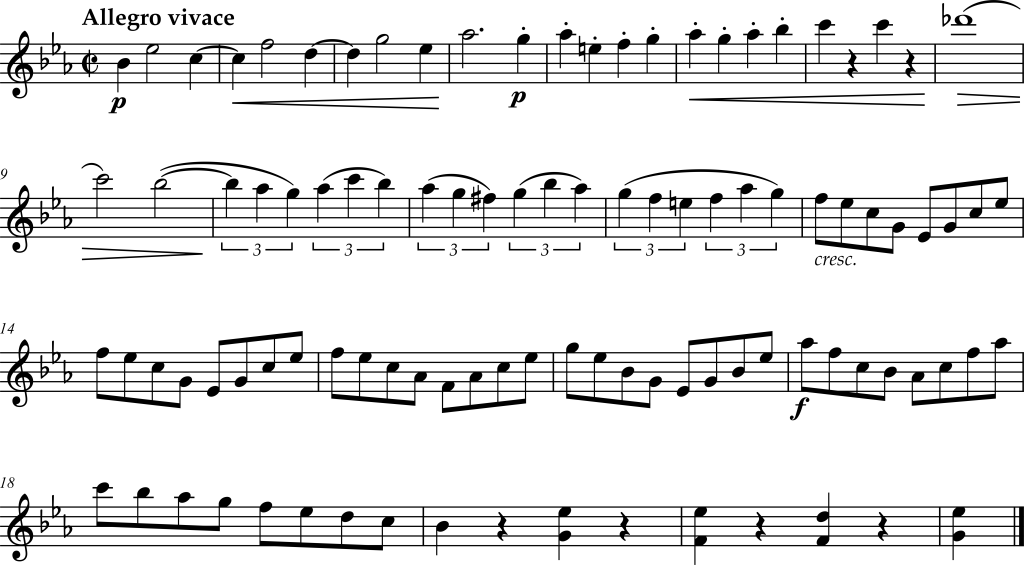
Exercise 3A–11: Frank Panella, On the Square
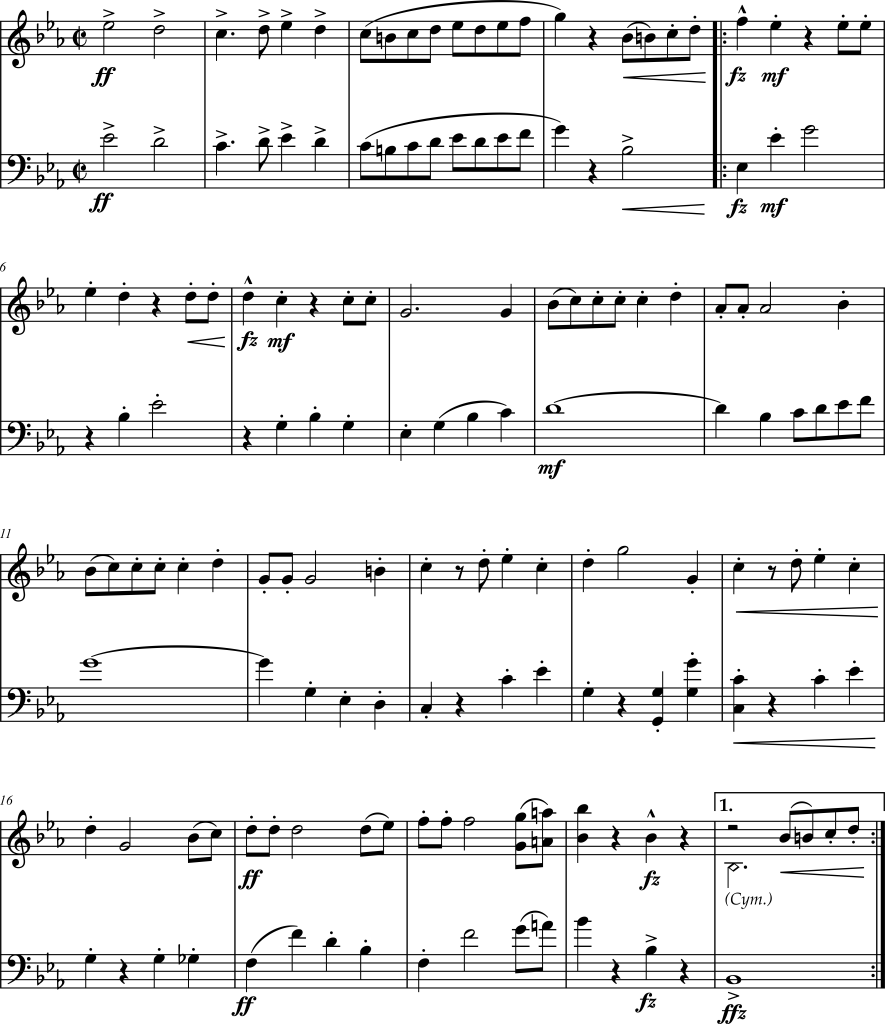
Exercise 3A–12: Robert Nathaniel Dett, Magnolia Suite for Piano, Number 3, “To My Lady Love”
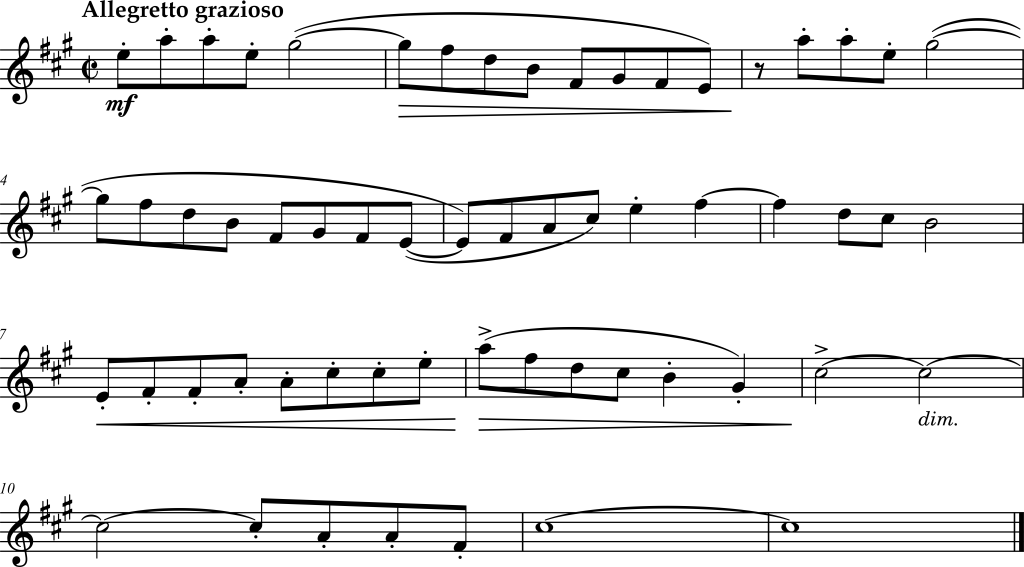
Exercise 3A–13: Élisabeth Claude Jacquet de La Guerre, Pièces de Clavecin, Book 1, Suite Number 4, Courante
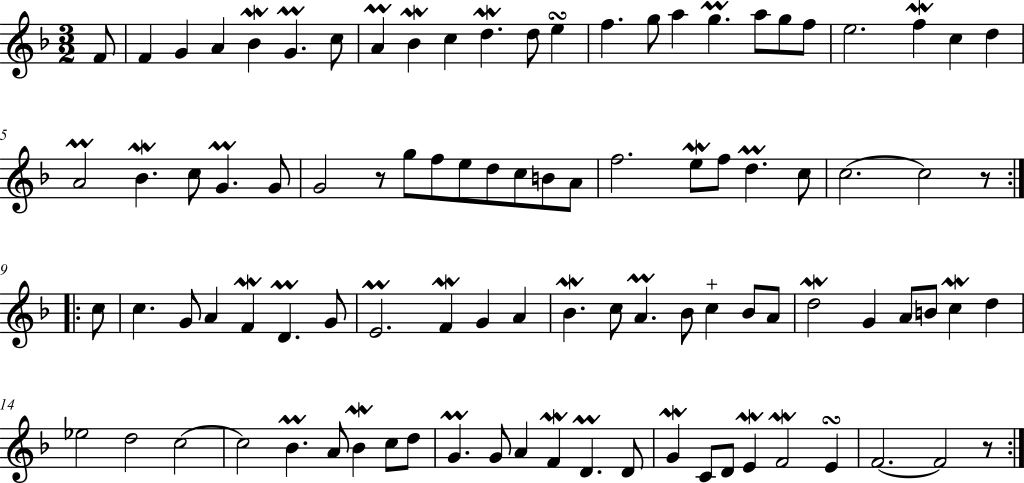
Exercise 3A–14: Hector Berlioz, La damnation de Faust, Scene 3, Hungarian March
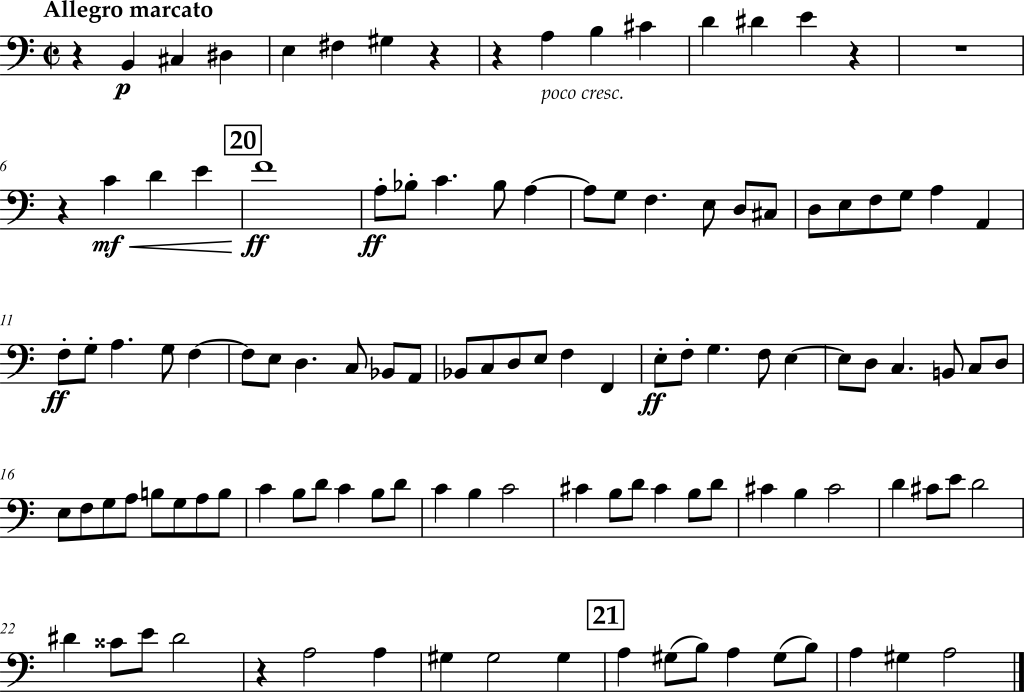
Exercise 3A–15: Lili Boulanger, Psaume CXXIX
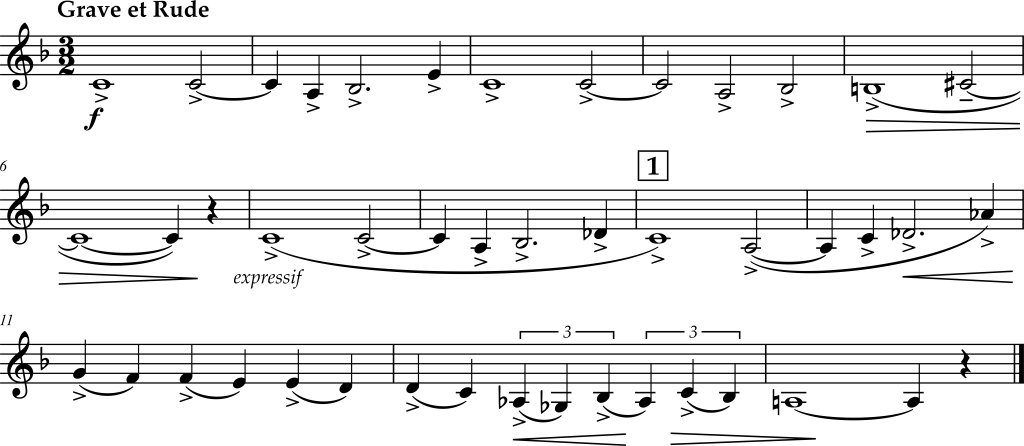
Exercise 3A–16: Bedrich Smetana, Overture to The Bartered Bride
